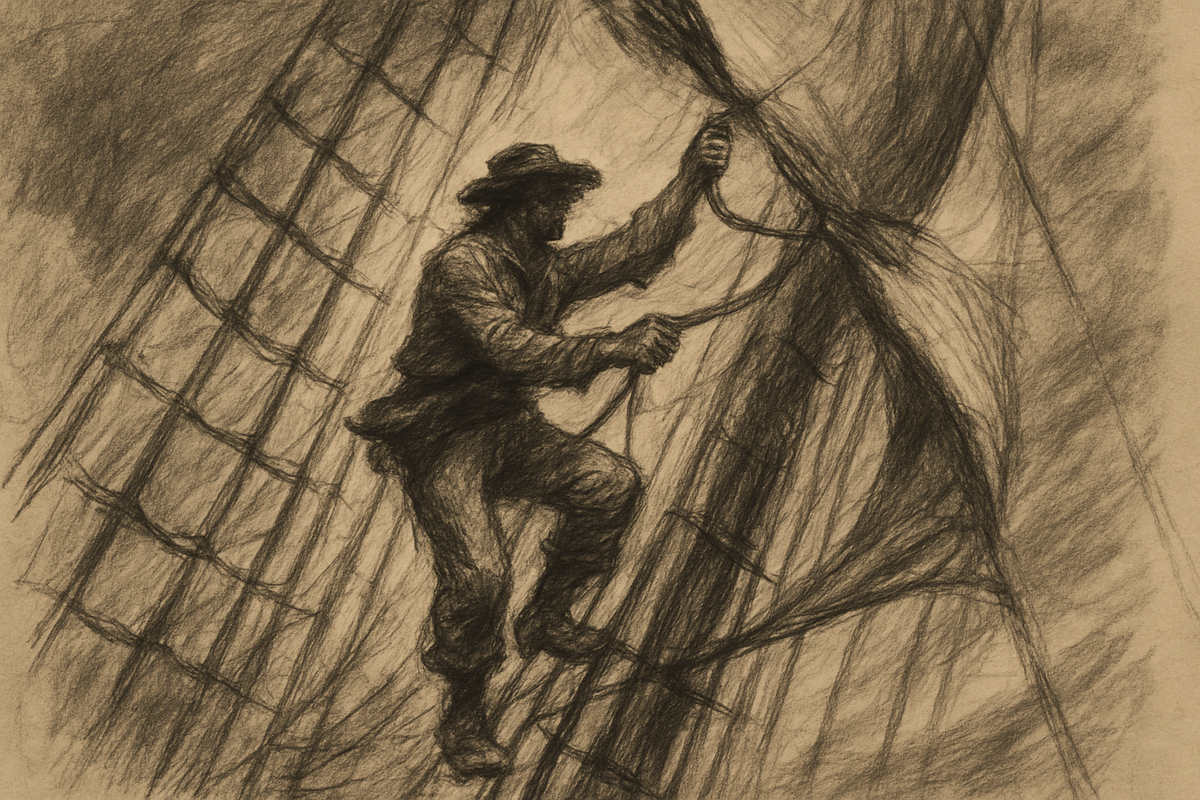Learn, build, judge, ship: What to look for in your first (AI) marketer

I've worked with 100+ startups over the past 13 years and led growth and marketing at Pinecone from pre-seed to $1B+ valuation. These days, when I talk to founders about hiring the same conversation keeps coming up: they're not sure what to look for in their first marketing hire. This post roughly reflects the advice I've been giving my consulting/advisory clients for the past six months, and it's been battle-tested through clients who took the advice and hired their first AI marketer.
The issue starts almost immediately, when founders ask me whether they should hire a product marketer or growth marketer or this or that... If that's where you begin, you're already headed for a sub-par hire who's not likely to make the impact you want.
Traditional marketing specializations like product marketing, growth, demand gen, and content marketing are relics of a pre-AI world where you needed separate people for separate functions. This doesn't cut it anymore, not when your competition is aiming for $100M ARR with a team of 20.
What you actually need is an AI-native generalist marketer who can do the work of 10 people. Someone who can quickly learn your technical domain, resourcefully build high-quality marketing materials using modern tools, judge what actually works and resonates, and obsessively ship results that move the business forward.
The best backgrounds are typically product marketing or growth, but what matters more is whether they're truly AI-native and can execute this complete loop: Learn, Build, Judge, Ship.
Learn: Technical Domain Mastery
An AI-native marketer doesn't just learn your space. They use AI to accelerate that learning process dramatically. They can absorb competitor research, customer interviews, and product documentation in a matter of hours instead of weeks.
At the same time, it helps if they come pre-loaded with context about your space. The closer to your space (the bullseye), the better:
- Inner circle: Direct domain experience. For example if you're an AI infrastructure company, the candidate is coming from another AI-infra company or one that serves exactly the same audience: model provider, agent orchestrator, AI observability, etc.
- Middle circle: Similar domain experience. The candidate wasn't working in the same space but their last product or target audience has a lot in common with yours.
- Outer circle: Any other background. For example the candidate is coming from a consumer company when yours is enterprise-facing. They need to show an exceptional track record of learning new things and making an impact in a new space, even if it's not yours.
Sample question: "What do you make of our website and product, what feedback do you have about it?"
Red flags: Generic feedback that could apply to any product. No technical questions or domain-specific insights. Can't articulate what they'd need to learn to be effective.
Green flags: Domain-savvy feedback like "your messaging feels too abstract for developers" or specific technical questions. Evidence of learning hard topics from zero to proficiency within the past five years. Shows how they'd use AI to accelerate domain learning.
One of the best people I hired for Pinecone came from a different yet developer-facing domain (payments APIs, "middle circle"). During my interview they spoke with clarity and nuance about their API product and its users, despite having only been there for a year. That quick learning ability combined with familiarity of API-driven developer products gave me confidence they'd succeed at Pinecone, which they did.
Beware: Even for someone with deep domain experience you want evidence of curiosity, learning, and adaptability. There's no industry I can think of that's the same today as it was even two years ago. I've seen founders confidently fast-track candidates just because they have many years of in-domain experience, only to discover too late those marketers are stuck in the past both in their methods and their view of the landscape.
Build: AI-Native Creation at Scale
This is where traditional marketers become obsolete. A single AI-native marketer can produce 5-10x the output of entire traditional teams.
The old model of specialized roles (one person writes, another designs, another codes) is dead for startups. You need someone who can use AI to write compelling copy, generate visual assets, build landing pages, create competitor analysis, and ship it all in days, not weeks.
Here's the key: they need to already be experimenting with these tools. If someone hasn't been playing around with AI for the past two years when the cost barrier is just $20/month, they're not naturally curious. You can't expect them to suddenly become AI-native when they join your team.
Sample question: "How do you use AI in your current marketing work? Walk me through a recent project where AI tools helped you achieve something that would have taken much longer traditionally."
Red flags: Limited use of AI tools (like only copywriting) or dismissive attitude toward them. Can't articulate specific workflows or productivity gains. Treats tools as black boxes without understanding how to optimize them. Says they're "willing to learn" but shows no evidence of experimentation. Still thinks in terms of traditional role boundaries.
Green flags: Specific examples of using AI for strategy, content creation, research, competitive analysis, even web development. Can describe 5-10x productivity improvements through tool usage. Shows resourcefulness in combining tools or finding creative solutions. Already experimenting with state-of-the-art tools and models without being asked. Understands this is the future of marketing, not just a nice-to-have skill or occasional shortcut.
Beware: I'm starting to hear a lot of "yes I use AI" in interviews, yet when pressed for details it turns out they only use AI for content creation—think social media posts, emails, blogs. If that's all they're using it for then they're at least a year behind the curve, and at this point there's no excuse.
Judge: Taste and Quality Standards
This is where most marketers fail, AI-native or not. You need someone with taste: the ability to look at messaging, content, or creative work—whether it's theirs or Claude's—or and immediately know if it's good or garbage. Someone who understands your audience well enough to predict what will resonate and what won't. You need someone who can separate the gold from the slop, who knows when to iterate and when to ship, who can maintain quality standards while moving fast.
Taste isn't just about creative judgment. It's about understanding the audience deeply enough to know they'll roll their eyes at buzzword-heavy copy. It's about knowing which competitor angle will actually land and which will sound desperate. It's about having the confidence to kill work that isn't good enough, even if it took hours to create.
Sample question: "Walk me through how you positioned that feature launch. What was your thought process, and how did you measure success?"
Red flags: "The PM explained the features and we covered the most important ones." Only mentions vanity metrics like page views. Can't connect marketing activities to business outcomes. Accepts AI output without critical evaluation. Task-oriented rather than goal-oriented thinking. No evidence of audience empathy or understanding what resonates.
Green flags: They questioned the initial brief and thought from the user's perspective. Tracks business outcomes (signups, pipeline) not just traffic. Can articulate why certain messaging works for their audience and why other approaches would fail. Demonstrates taste in evaluating AI output and knowing how to iterate to get quality results. Shows examples of killing work that wasn't good enough. Goal-oriented mindset when working with AI tools.
Ship: AI-Enabled Execution Speed
Your first marketer needs to ship fast. Everything: new webpage copy, competitive battle cards, sales collateral, blog posts. Product launches are good barometers of this, but it's not just launches.
You can't afford to have them wait on designers or developers, request multiple approval cycles, or manually sort through customer records. You need someone who can move nearly at the rate of ChatGPT's token output.
It's not about cutting corners. It's about using AI to eliminate bottlenecks that shouldn't exist. An AI-native marketer can conceive, create, and ship a new landing page in days because they're not constrained by traditional role boundaries or waiting for handoffs between specialists.
Sample question: "Tell me about a time you had to deliver something important under tight deadline pressure. Walk me through your approach."
Red flags: Takes weeks to ship simple marketing materials. Needs extensive planning and approval cycles before taking action. Focuses on perfection over speed. Can't give examples of rapid iteration based on results. Relies on traditional workflows that require multiple handoffs. Talks about needing "a designer" or "a developer" for basic tasks.
Green flags: Can ship new landing page copy in days, not weeks. Comfortable with iterative improvement rather than getting everything perfect upfront. Takes ownership beyond their specific deliverable; for example if the launch needs something to succeed, they make sure it happens. Shows examples of rapid testing and iteration based on real performance data. Uses AI tools to bypass traditional bottlenecks and role limitations.
The "Hell Yeah or No" Rule
If you're not excited about a candidate, don't hire them. I've never seen a "maybe" hire become a star performer at an early-stage startup, and I've regretted following the "hell yeah or no" rule from Derek Sivers.
Look for candidates who surprised you in the interview. Maybe they took an unexpected angle on positioning, showed you a clever AI workflow, or identified something about your marketing that you hadn't noticed. Even if their specific idea won't work for you, independent thinking combined with AI-native capabilities is exactly what you need.
When I get vague answers or lukewarm responses, I give people a chance by asking follow-ups and nudging them toward more details. But if they still don't deliver, they don't pass. I've learned that even nice people from respectable companies sometimes just rode the wave while someone else did all the strategic thinking.
Traditional specialists who can't adapt to AI-native workflows will become obsolete. The startups that win will be those that embrace AI-native generalists who can do the work of entire traditional marketing teams.
At your stage, you need someone who can learn your domain quickly, build high-quality materials resourcefully, judge what actually works and resonates, and ship results obsessively. The right AI-native person can have 10x the impact of traditional hires—but only if you choose someone who fully embraces this new way of working.
Your first marketing hire will define how you compete. Make sure it's someone who makes you genuinely excited about that future.




